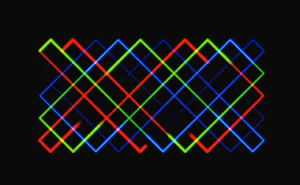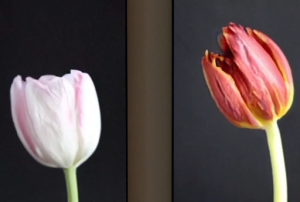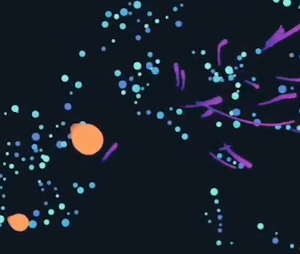Read the article by Amy Goodchild and discuss some of the techniques that interest you.
Generative Arts by definition is art created using autonomous processes and autonomous process is defined as a process not under direct human control.
Using these definitions, it should be readily apparent why the advent of AI and also technology in general are a powerful boon to this broad genre of art.
This article explores a plethora of examples that cover many different techniques and approaches to the fusion of technology and AI that showcase a fascinating world that is heavily explored already, but still with much to be discovered.
Mathematics
Using mathematical algorithms for generative art is not a new concept, nor is using it in a digital realm to produce images and artwork. Even basic visualizers from the early days of computers used similar practices in order to generate visuals for a wide variety of purposes. (Shout out to winamp!)
However, with the advent and advancement of AI, this approach to generative art has acquired a large boost to capability and accessibility. Never has it been easier to work with a program to generate fresh code and algorithms to produce never before seen images and videos.
This is a frontier that I feel will become especially streamlined and expanded upon as AI software continues to allow more complex processes and ideas to reach fruition.


https://www.instagram.com/p/C3YM14Yiwpo/
Artificial Intelligence
Artificial Intelligence in generative art is approached in this article as a similar and parallel process that shares many characteristics of generative art outside of the influence of AI.
I view AI as not only a natural path of progression for generative art, but also the gateway to new frontiers.
In the article, Anna Ridler’s work entitled Mosaic virus serves as a perfect example of the potential AI holds in this genre and highlights a key aspect that I think will make AI a crucial tool to these forms of art, artist selected unique datasets from which AI can generate images and art.
As more artists assemble custom selected datasets and begin sharing them online or using them for their own creations, I really think we will start to see a form of art generated by AI that becomes a truly unique experience uplifted from the mundane and generalized content produced by AI’s based on larger and less specific datasets.
http://annaridler.com/mosaic-virus/

Simulated Ecosystems
Simulated Ecosystems is a niche looking but enticingly useful application of generative art that I also see a vast amount of potential in.
While my knowledge on this subject is limited, I wonder if its possible to observe the tendencies and movement of organisms and use these to run very real simulations of possible interactions between species or organisms instead of the more whimsical approach of imaginary organisms used in this article.
The sci-fi nerd in me would love to see the simulation of real organisms, perhaps at a microscopic level, going through theorized changes to their environment or interactions with other organisms.
